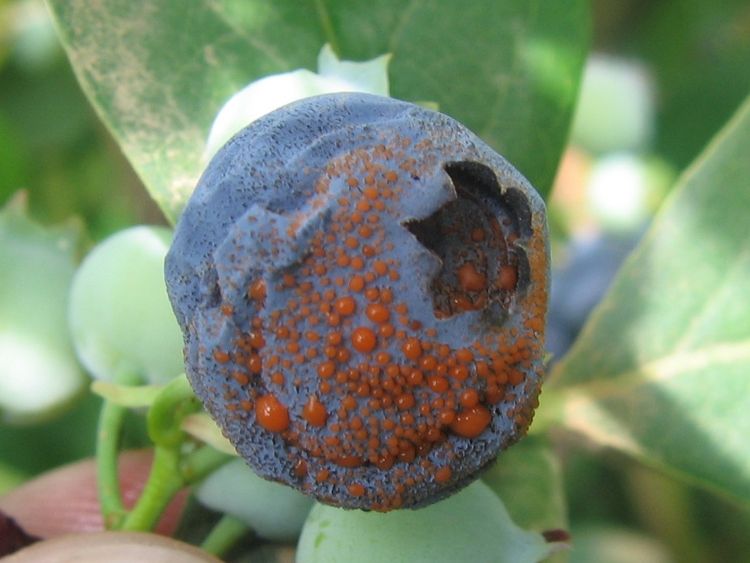Timothy Miles, an assistant professor in MSU's Department of Plant, Soil and Microbial Sciences, is teaming up with researchers across the U.S. to further study management of Anthracnose and Botrytis fruit rot in blueberries.

He received a $3.95 million grant from the U.S. Department of Agriculture National Institute of Food and Agriculture to develop strategies for implementing and maintaining effective management practices for blueberry fruit rot.
Timothy Miles, an assistant professor in MSU’s Department of Plant, Soil and Microbial Sciences, is leading a multi-institutional team of researchers in addressing ways to improve the quality of blueberries while limiting their loss before, during and after harvest.
The USDA-funded project, part of the USDA’s Specialty Crop Research Initiative, is called: “BLUE-DYNAMO: An Interactive Platform to Deliver Blueberry Disease and Horticultural Management Strategies for Fruit Rots.”
Blueberries are sometimes referred to as “little blue dynamos” due to their health benefits. In this case, “BLUE-DYNAMO” is an acronym that stands for, “Building the Latest Understanding in Extension — Disease Management that Yields New and Meaningful Outputs.”
Michigan is a top producer of blueberries in the U.S. with more than 20,000 acres in production, according to the Michigan Ag Council. The industry also contributes roughly $132 million to the state’s economy.
Two of the most common fruit rot diseases that alter the quality and yield of blueberry crops in the U.S. are Anthracnose fruit rot (AFR) and Botrytis fruit rot (BFR). AFR, also known as “ripe rot,” shows itself by wilting blueberries and producing spore masses that appear as orange speckles. BFR typically occurs in cooler temperatures and presents as gray mold on blueberries and other crops.
While much is already known about these diseases through previously conducted studies, Miles said advances in technology and joint action among scientists from across the country will propel current knowledge forward and address stakeholder needs.
“What makes this research unique is that it’s a coordinated effort (from multiple institutions) to study fruit rot across the U.S., and in blueberries that hasn’t happened before on this large of a scale,” Miles said.
For the full story, visit canr.msu.edu.
